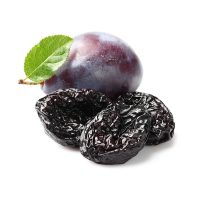History of cultivation apricot
The center of diversity of the apricot is northeastern China near the Russian border. From there it spread west throughout central Asia. History of cultivation apricot
Cultivation in China dates back 3000 years. The Romans introduced apricots to Europe in 70-60 BC through Greece and Italy.
Agricultural Marketing Resource Center
Apricots probably moved to the US through English settlers on the East Coast, and Spanish Missionaries in California.
For much of their history of cultivation, apricots were grown from seedlings, and few improved cultivars existed until the nineteenth century. Cultivars vary among countries, and in Iran, Iraq, Afghanistan, Pakistan, and Syria, a great deal of the production is from seedling orchards.
History of cultivation apricot
Apricot plant
Apricots are small to medium-sized trees with Spreading canopies. They are generally kept under 12′ in cultivation, but capable of reaching 45 ft in their native range. The one-year-old wood and spurs are thin, twiggy, and shorter-lived than those of other stone fruits. Leaves are elliptic to cordate, with acute to acuminate tips, about 3″ wide; wider than leaves of other stone fruits. Leaves have serrate margins and long, red-purple petioles. History of cultivation apricot
https://www.irandriedfruit.com/dried-apricot-exporters/
Apricot flower
Flowers are similar in morphology to peach, plum, and cherry. White flowers are borne solitary in leaf axils of 1-yr wood, or in leaf axils on short spurs and appear to be in clusters. There are 5 sepals and petals, many erect stamens, all of which emanate from the hypanthiums or floral cup. Ovary position is epigenous.
other products
-
Whole dried apricot Special wholesale price + analysis + sale offer
This variety is very sweet with an orange color. Sulfur is added to whole dried apricots in order to maintain the natural color, prevent bug infestation, and increase preservation.
-
Dried lime Powder
Dried Lime: Producer area: Fars, Hormozgan How to store: Fresh dried lime is in mustard color and sour taste. Dried lime in big size and darker color is the one with high quality. It can be stored in dry place…
-
Dried Prune
Since time immemorial, dried plume has been reputed for its anti-conception properties. However its benefits have gone beyond this. Wishing to lose some weight, we highly recommend you to put dried plume to your diet, either in your food or…
-
Sargol Saffron | most economical saffron for import
Sargol Saffron | most economical saffron for import : sargol saffron consists only of Dark Red Stigma (thread) Tips. So. in other words all the white and orange parts are removed. This saffron is the second most expensive type of…













 3 kind raisin
3 kind raisin 


